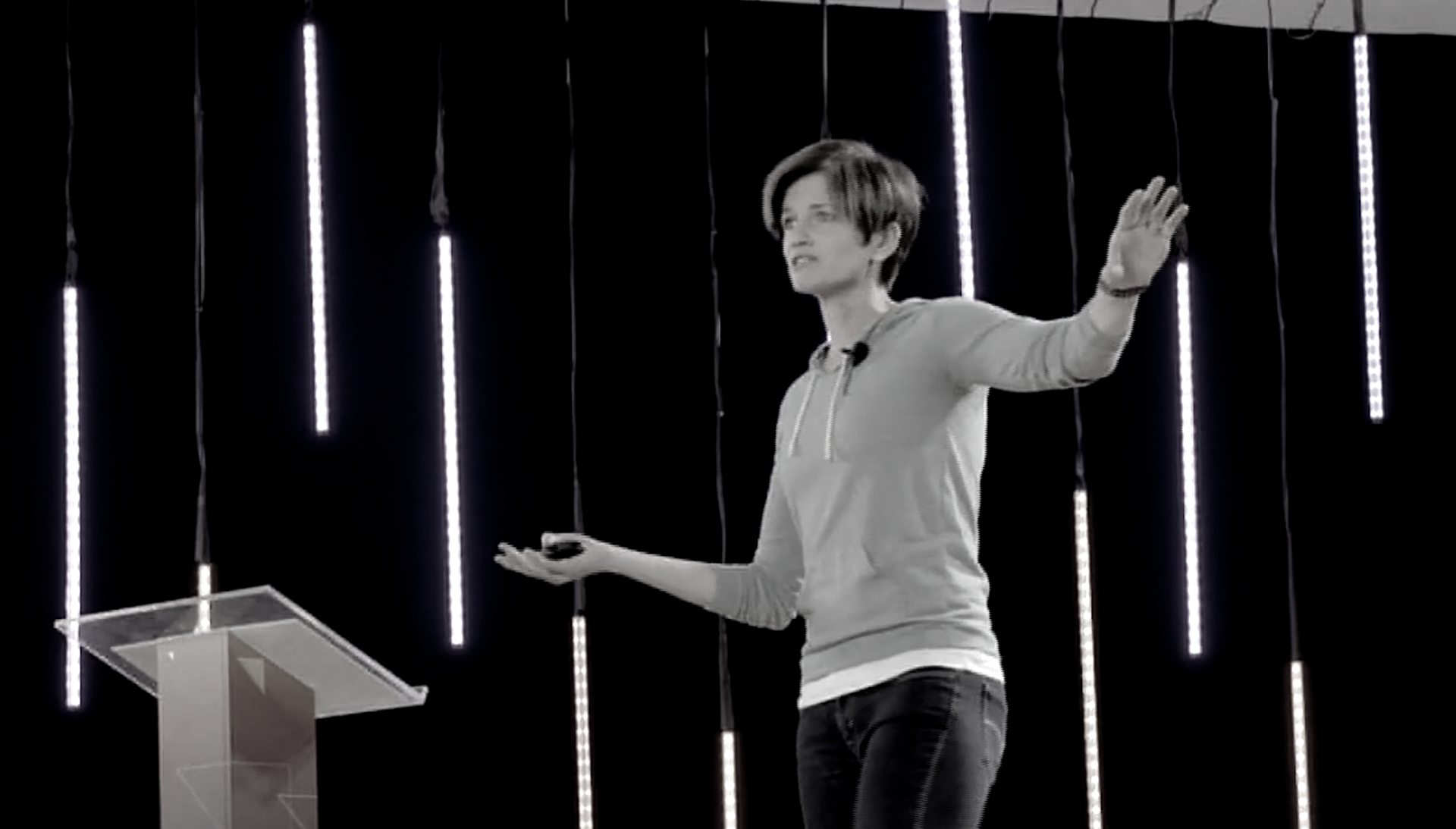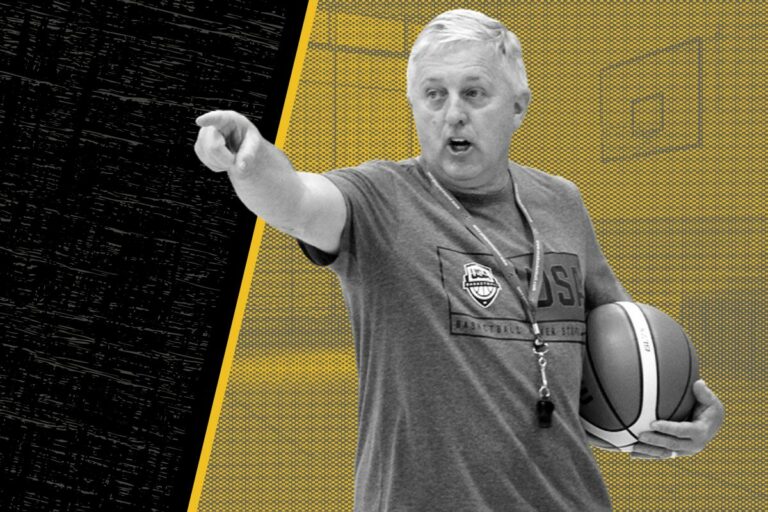Betty Butterick Coaches Leadership Through Adversity
- Small changes to our thought process can snowball and build something better.
- Coaches/leaders play a vital role in their group’s mental wellbeing.
- Elite-level coaching requires as much focus on mental skills as it does on strategizing and conditioning.
Betsy Butterick, The Coach’s Coach and Communication Specialist, has played and coached basketball at almost every level, from junior college to the WNBA. She now applies her diverse experience helping coaches and teams achieve success via intentional, meaningful connection. Below, she shares her expertise and perspective on leadership through adversity and team communication with Leading Edge.
Listen to the entire conversation below or on The Leading Edge Podcast.
Q: You work closely with a number of coaches and programs, how did the cancellation/postponement of sports and in-person gatherings impact you?
It’s not just one sport. It’s not just one level. It’s all sports, all levels in terms of a global impact. So, we had this very unique, very ripe, very impressionable space to make a positive difference.
There’s no playbook for this.
When there’s no script, the story that will be told about this time is the one that we write as coaches, as administrators, as educators, and as leaders.
Starting with the webinar, Game On: A Season of Choice. This was my personal response, “OK we don’t have sport[s] right now. We don’t have the opportunity to have a traditional season in the way that we’re used to. What can we do?” I started thinking about meeting the athletic community where we are.
Q: In the early days of the pandemic, you said that COVID-19 was, "like a season ending injury but, for everyone.” That really captured the degree of grief and loss that many were feeling, especially for graduating seniors. Whether now, or when things don't go our way in upcoming seasons or games, how can a leader display leadership through adversity and help facilitate healthy grieving for their groups?
Often when I encounter people that are dealing with difficult situations, or more specifically supporting someone in a difficult situation, they’ll say things like, “Betsy I don’t know what to say. I don’t know what to do.”
Simply showing up, being available to listen, without needing to say the right thing or say anything, simply let them know that you’re there to support them. Letting them process, or talk, or not, in whatever way serves them. Avoid trying to find the right words and to fix any feeling that arises.
Our student athletes and those in our youth programs are considered Generation Z. Research cites that they value honesty and specific feedback that’s delivered in a kind, caring and encouraging manner.
So simply, when in doubt: choose kindness. There are ways in which we can show up for our community, in ways that are specific to us, but allow us to feel supported and connected in a time when many of us can otherwise feel isolated.
Q: What advice can you give a coach or program leader who equates helping with action or providing solutions, so they can attempt the “sit with someone else’s suffering and don’t try to fix it” approach?
Acknowledgement, I think, is key. Sometimes as a leader it takes “going there” first. Leading the way in terms of saying and sharing what is difficult or challenging during this time for you, and offering and holding space for others to do the same.
Sometimes, unintentionally we miss that mark of simply saying, “You know, I haven’t seen other people outside of my house in weeks. The people that I’m used to showing up with, practicing with, playing with and being around, I haven’t seen those people. I miss those people; this is really hard; this is really different.”
The more information that we have the better equipped we are to ask questions and support others. Ask questions that feel beneficial, but understand that the answer you get back may not tell the complete story.
“How do you feel,” is one question that we often ask. It’s important to know how they feel. And yet that question assumes that the individual we’re speaking with has a robust enough emotional vocabulary to accurately describe what’s going on for them internally.
I’m not saying don’t ask. You can get creative with questions and find ways to ask more connective questions. For example, asking a question like, “What’s the most important thing that you want to talk about today?”
How you phrase your question can help. If you ask, “How are you doing,” versus, “What are you doing to stay busy during this time,” you’re going to get a more detailed answer.
Q: How can coaches or leaders of large programs forge a meaningful connection with everyone in their program? What does holding space for individuals look like at this scale?
One of the things that I’ll talk about often with leaders of programs and organizations is this idea of lifting from the bottom. Picture a heavy box that’s maybe too big for you to really get your arms around comfortably. Any strength and conditioning coach will advise you to bend your knees and lift with your legs not your back.
It’s the same concept when we think about our organization, or community, or program. Intentionally looking for individuals that may need a little extra support during this time—or any tough time. Can we get down on their level and support them and lift the entire team by starting with those that need more from us at this time?
If you feel you need to move the group forward and some are still needing space and time to come along, let those people understand, “It’s not my intention to rush your process. I do want to help the team move forward in the interests of everyone. We’re going to go there. We’ll ask you to come with us. We’re going to also ask that you tell me what you need as we take these steps together so that I can help bring you along.”
Having this conversation—that’s lifting from the bottom and making sure that you don’t throw out your back.
Q: What if this level of vulnerability and communication feels inauthentic or uncomfortable to a leader? Maybe it's not in their style or feels too emotive, idealistic or overly positive?
Something I’ve heard recently that I really like is this idea of, instead of positive talk or positive self-talk, it’s useful self-talk—because positive can feel like a big gap for some people. Let’s say you are pretty self-critical even just inside your head with what you say or how you view your performance, or you’re replaying the past in your mind and the script is not that positive. So, it can feel like a big jump to go from negative to positive.
What I found over time and what I stressed when I work with individuals or teams is that there really is science behind the power of positive language. Words create worlds. If we don’t have language for something, it doesn’t exist. We get to choose the words that we use to create an environment.
There’s so much research around the fact that positive environments outperform negative environments; that positive leaders do better under pressure; that positive emotions such as gratitude and appreciation actually influence positive performance. So, it’s not just sunshine and rainbows, sprinkles and unicorns. There is power to positivity and if words are a tool and we get to pick which tools are in our shed, let’s use positive ones and create a more positive environment.
An exercise I’ll do with a team is say, “I want you to write down every single word or phrase that your coaches use often that starts with a negative—typically stop, can’t, or don’t.” They get really excited and write them down. And then I’ll say, “OK, I want you to see those phrases and I want you to rephrase them in the positive.
Q: You’ve shared some unique perspective on the power of gratitude to steer us through adversity and the strength that it offers to reclaim a significant amount of control in any given situation. How can we all work to turn grief to gratitude, and display more powerful leadership through adversity?
Oftentimes when we think about gratitude, we can feel like only the big things count, right? When it comes to gratitude, the best advice I can offer is start small.
We do ourselves a disservice when we say, “well nothing major happened to me lately.” There are times throughout the day where I stop and I’m like, “Man, that was great. That was awesome. I’m really grateful that happened.” Simply express what it is that you’re thankful for.
Gratitude is a choice. And we get to choose it, especially in adversity, especially in times like these.
There’s an exercise that I did with a team recently where they finish this sentence. It’s kind of like Mad Libs where you’re filling in the gaps. “Though I can’t do blank, I can still do blank.” By acknowledging and validating where they are, they then take the step towards gratitude, to acknowledge what’s controllable by them and what to do next. That feels forward facing.
In adversity and even in the heat of a competition: fear cannot exist where gratitude is present. If you really start to think about that, when you’re feeling fearful, what are the thoughts that are typically in your head?
“I don’t know if I’m good enough. I don’t know if this is going to end well. I don’t know if we can do it.”
It can be helpful if you replace any of those thoughts with a sense of gratitude like, “I’m grateful I have this opportunity to be here.” And, “I’m grateful for my teammates.” We have a choice with our language and our language shifts our reality.
With gratitude, start small and keep going. It’s something that snowballs and builds upon itself.
It’s one of my favorite superpowers because anybody can choose it.
Q: How do you view "leadership through adversity?" Who is a leader and what makes a good one?
I guess I would start by saying, anybody that wants to be a leader can be a leader. Oftentimes we think about leadership as positional, or coming with a title, and being for some people and not for others.
There are two questions that I have on separate sticky notes above my desk. The first question is, “What can I learn?” The second is, “How can I help?” For me these are the central questions of leadership.
Leadership is when we bring that beginner’s mind, when we cultivate curiosity, when we show up for others in our space. I think the most dangerous place to be is one where “we know” because when we know, we’ve closed off possibilities.
Leadership in its purest form is person to person and it starts with one. And anyone that has the intention of, “I would like to do this in support or service of other people,” or “I would like to be the first follower,” that’s a way of demonstrating leadership.
Brene Brown has this great quote about vulnerability that says, “vulnerability is having the courage to show up when you can’t control the outcome.” And to me that’s leadership. And yet, we think so often as leaders that showing our vulnerabilities is weakness and going backwards.
I talk often about this with leaders, what I call an admission of vulnerability—when we make a mistake. Typically, people do what they can, as quickly as possible to minimize or hide the fact that they’ve made a mistake, so that as few people as possible notice.
An admission of vulnerability flips on its head. A leader takes a moment to acknowledge and say, “Hey I screwed up. This is what happened. This is how I intend to fix it. This is how I intend to move forward.” That prevents it from happening in the same way again. That’s leadership.
Q: What advice would you give to a coach who wants to maintain training of mental skills and team communication regularly with their group? In order to continue the progress and even make it their own?
Whether referring to you individually, or you as a leader, or you as a program, I found it very helpful to start from, “Who do I want to look back and say I was during this time?” Or to think of it another way—what’s the story that others will be able to tell about you, or your program, or your team during this time? Work backwards from there.
If we want to be seen as an organization, or a team, or as an individual that was optimistic or positive, OK. What does that look like?
Ask that question, “what does that look like,” and scale it back to the behaviors that a person, organization, or team would exhibit. These are the types of activities that they might do. These are the questions they might have. The conversations they might have.
Scaling it back while keeping that larger picture in mind. There is no perfection. It’s a playground in place of perfection. We have a playground to try something new—the service of the outcome that we’re looking for—it is not perfection, it’s intention.
What’s the intention that you have for who you are? For your teammates? Then ask, “what does that look like?” By asking that specific question, then you can get into the nuances of behavior and help support those, or encourage those things in the people that you work with.











